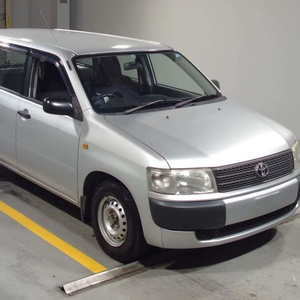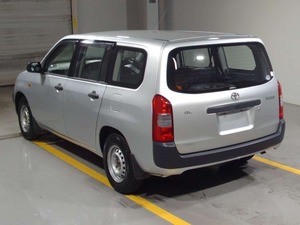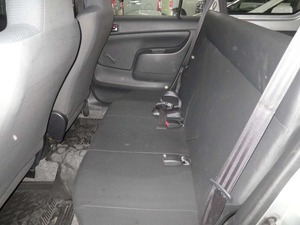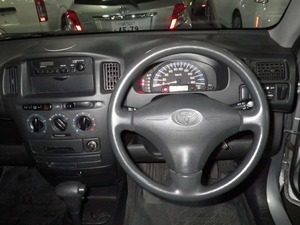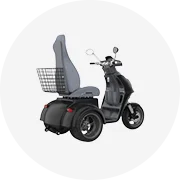Types of Toyota Probox Van
The Toyota Probox van has been a workhorse for many businesses and trades, especially in East Africa. Known for its reliability, durability, and fuel efficiency, the Probox is often seen as the go-to vehicle for many commercial purposes. Depending on your specific business needs, several variations of this versatile vehicle are available in the market.
The ordinary Toyota Probox is the most widely used version, offering a flexible and practical solution for businesses. It can be configured as a van or a car, depending on what the business requires. The Probox's spacious interior can accommodate cargo or be set up as a comfortable space for clients and employees.
Best for: General business use, versatility, daily operations
A common choice for businesses needing transport solutions, the Probox Van provides a sizable interior, strong fuel efficiency, and a tough chassis. It's ideal for delivery services, tradespeople, and other businesses requiring dependable transportation. This model can be customized with shelving, storage solutions, or cargo area fittings.
Best for: Cargo transportation, delivery services, trade businesses
Designed for businesses operating in off-road or challenging environments, the 4WD system offers better control and stability on various terrains. It's perfect for rural deliveries, field services, and applications requiring off-road capability. Built with a robust chassis and suspension system to handle demanding conditions.
Best for: Rural areas, unpaved roads, challenging terrains
An environmentally friendly solution combining a petrol engine with an electric motor for better fuel efficiency and lower emissions. Suitable for urban areas with strict emissions regulations and for companies concerned about environmental impact. Offers a comfortable and quiet ride, making it ideal for passenger services and corporate transport.
Best for: Eco-conscious businesses, urban operations, passenger transport
A less common but relevant option that can be configured for comfort, despite typically being associated with commercial use. Appropriate for corporate transportation services, executive travel, and other applications requiring a professional and comfortable environment.
Best for: Corporate transportation, executive travel, professional services
Adapted to meet specific business requirements with additional features such as refrigeration units for perishable goods, medical equipment for healthcare services, or specialized tools for trades. Can be customized with various options for interior fittings, equipment, and modifications to suit unique business needs.
Best for: Specialized businesses, custom requirements, industry-specific needs
Expert Tip: When selecting a Probox model, consider not only your current business needs but also potential future growth. Investing in a slightly more versatile model may save costly upgrades later as your business expands.
Maintenance of Toyota Probox Van
Proper maintenance is crucial for maximizing the lifespan and performance of your Toyota Probox van. Following a comprehensive maintenance schedule helps prevent costly repairs and ensures reliable operation for your business needs.
- Extends vehicle lifespan by up to 50%
- Reduces fuel consumption by 10-15%
- Decreases repair costs by up to 30%
- Improves safety and reliability
- Maintains higher resale value
- Daily: Visual inspections
- Monthly: Fluid checks, tire pressure
- Every 5,000km: Oil change, filter check
- Every 15,000km: Air filter replacement
- Every 40,000km: Coolant replacement
Regular maintenance appointments should be scheduled with a certified Toyota mechanic. The maintenance plan outlines the recommended intervals for essential services such as oil changes, fluid changes, air filter replacements, and more. The Toyota Probox van's performance and durability can be maximized by following the maintenance schedule, which helps identify any potential problems before they become serious.
Regularly checking the engine oil, coolant, transmission fluid, brake fluid, and power steering fluid levels and quality is essential. Topping up should be done as necessary, and any fluid with degradation signs should be changed to maintain optimal performance. Maintaining healthy fluids is vital for the van's critical systems, including lubrication, cooling, and hydraulics.
Tire maintenance is essential for safety and fuel efficiency. Maintaining appropriate tire pressures, inspecting the tread for even wear, and performing regular rotations are all necessary. Low-pressure tires can reduce fuel efficiency and increase van operating safety risks. To maximize traction and stability, adequately maintaining the Probox van's tires is essential.
Brakes are crucial to the van's safety. Maintaining the brakes regularly is essential, including checking the brake pads, rotors, and calipers for wear and replacing them as necessary. Additionally, the brake lines and brake fluid levels should be visually inspected for leaks or degradation. Maintaining the brake system's health is essential to ensuring reliable stopping power and preventing accidents.
Maintaining the Toyota Probox van's steering and suspension systems is essential for maintaining ride comfort, stability, and safe handling. It is essential to check the shock absorbers, struts, and bushings for wear periodically and to replace them as necessary. Additionally, the steering components should be inspected for proper function and alignment.
For optimal engine performance, replacing the engine air filter at least once a year or every 15,000 to 30,000 kilometers is essential. A clean air filter promotes optimal combustion, improving fuel efficiency and engine performance. Depending on driving conditions, more frequent inspections and replacements may be required.
Every 40,000 to 60,000 kilometers or every two years, the engine coolant must be replaced. The engine coolant is vital for temperature regulation and preventing overheating of the engine. Maintaining the engine coolant's quality and level helps maintain stable engine performance and prevents engine damage from overheating.
Maintaining the Toyota Probox van's body and chassis is vital to prolonging its life and maintaining its appearance. Regular washing helps remove dirt, dust, and rust build-up, especially in coastal areas. Additionally, a suitable rust protection kit can prevent rust and corrosion on the chassis and body parts, increasing the van's life.
Maintenance Tip: Create a maintenance log to track all service activities and repairs. This documentation not only helps you stay on schedule but also increases the resale value by providing the next owner with a complete service history.
How to Choose a Toyota Probox Van
Selecting the right Toyota Probox van for your specific needs requires careful consideration of several important factors. Making an informed choice ensures you get a vehicle that meets your requirements while providing the best value for your investment.
Determine the intended use of the vehicle. Different configurations of the Probox are better suited for diverse tasks, like commercial cargo transport or family commuting. Consider whether you'll primarily be transporting goods, people, or a combination of both to select the most appropriate model.
Consider the engine specifications. The Probox comes with multiple engine options, each offering distinct power and fuel efficiency levels. Choose a model with adequate power for the intended use, balancing fuel efficiency. For heavier loads or hilly terrain, a more powerful engine might be necessary despite potentially lower fuel economy.
Decide on the transmission type. The Probox offers both automatic and manual transmission options. While manual transmissions provide better control and are more fuel efficient in some situations, automatic transmissions offer ease of use. Your choice should reflect your driving preferences and the typical operating conditions of the vehicle.
The Probox is primarily a petrol-powered vehicle. However, some models offer diesel engines. Consider the availability of fuel types in the local area and the economic viability of each option. Diesel may offer better fuel economy for high-mileage operations but might have higher maintenance costs.
Consider the common driving conditions. If the Probox is to be driven on rough or unpaved roads, opt for models with higher ground clearance and rugged features. The 4WD variant might be necessary for areas with poor road infrastructure or during severe weather conditions.
If the Probox is to be used for commercial purposes, consider its load capacity. Different configurations have varying cargo space and load limits. Ensure the model you choose can safely handle your typical payload without straining the vehicle's capabilities.
The Toyota Probox offers various interior and exterior customizations. These include choices for seating arrangements, cargo management systems, and tech features. Choose the configuration that aligns with the business's or family's needs and consider aftermarket customization possibilities.
Consider the vehicle's resale value. Typically, cars with better fuel efficiency, regular maintenance, and overall good condition fetch a higher price. However, the resale value is also determined by the vehicle's popularity in the region. Standard models often have stronger resale markets than highly specialized variants.
Probox vans are available in various designs and colors. Choose a color that resonates with the brand identity if used for business purposes. For personal use, select a design that suits your aesthetic preferences while considering factors like dirt visibility and heat absorption in your climate.
Selection Tip: Always test drive the specific Probox model you're considering under conditions similar to how you'll actually use it. Pay attention to visibility, comfort during loading/unloading, and how it handles with your typical cargo weight.
How to DIY and Replace Toyota Probox Van Parts
Performing basic DIY replacement and maintenance on your Toyota Probox can save costs and ensure your vehicle remains in optimal condition. Follow these structured steps for successful part replacement:
Before beginning any DIY replacement on your Toyota Probox, collect all required tools such as screwdrivers, socket wrenches, pliers, jack and jack stands, work gloves, and safety glasses. Having the right tools prepared will make the process more efficient and reduce the risk of damage to parts.
Carefully remove the worn-out or damaged parts using appropriate tools. For interior trim pieces, use a screwdriver with the correct head size. For exterior parts secured with bolts, use a socket wrench of the proper size. Work methodically and keep track of all removed hardware to ensure proper reassembly.
Once the old part has been removed, thoroughly clean the area where the new part will be installed. Use a clean cloth to remove dirt, grease, and debris. For stubborn residue, a mild cleaning solution can be used, but ensure the area is completely dry before installing new parts, especially for electrical components.
Handle new parts with care during installation to avoid damage. Follow the reverse order of removal for installation, ensuring all components are properly aligned before securing. Use the same tools used for removal to secure the new parts, and be careful not to overtighten fasteners which could damage new components.
After installing the new part, verify that it is functioning correctly. For mechanical parts, check for proper movement and alignment. For electrical components, test functionality before fully reassembling surrounding parts. Ensure there are no loose connections or rattling sounds that might indicate improper installation.
Once all parts have been replaced and checked, take your Toyota Probox for a test drive to ensure everything is working properly under actual operating conditions. Start with a short drive in a safe area, paying attention to any unusual sounds, vibrations, or performance issues that might indicate problems with the newly installed parts.
DIY Tip: Always consult the Toyota Probox service manual specific to your model year before attempting any repairs. Many parts have specific torque specifications and installation procedures that, if not followed correctly, can lead to premature failure or safety issues.
Frequently Asked Questions
The Toyota Probox is a compact commercial van designed and manufactured by Toyota, a Japanese automotive company. It was introduced in 2002 and has become popular for commercial and business purposes, particularly in East African markets. The Probox is known for its reliability, durability, fuel efficiency, and practical design that maximizes cargo space while maintaining a relatively small footprint.
This versatile vehicle is commonly used for small business deliveries, taxis, family transportation, and various commercial applications where a balance of cargo capacity and passenger comfort is required. Its simple design prioritizes functionality and low maintenance costs over luxury features.
Yes, the Toyota Probox is widely recognized for its exceptional reliability. This reputation stems from several key factors:
- Durable Engine: The Probox features Toyota's proven engine designs that are known for their longevity and ability to withstand challenging conditions.
- Simple Mechanics: With fewer complex electronic systems compared to luxury vehicles, there are fewer components that can potentially fail.
- Low Maintenance Costs: Parts are generally affordable and widely available in markets where the Probox is popular.
- Service Network: Toyota's extensive service network makes maintenance and repairs accessible in most regions.
Many Probox vans remain in service well beyond 300,000 kilometers when properly maintained, making them a cost-effective long-term investment for businesses and individuals alike.
The Toyota Probox van offers several key features that have contributed to its popularity:
- Spacious Cargo Area: Despite its compact exterior, the Probox offers impressive cargo capacity with a flat loading floor and accessible dimensions.
- Versatile Interior: Can be configured with seats for passenger transport or as a pure cargo van with maximum storage space.
- Fuel Efficiency: The 1.3L and 1.5L engine options deliver excellent fuel economy, particularly important for businesses managing operating costs.
- Maneuverability: Compact dimensions make it easy to navigate through congested urban areas and tight spaces.
- Reliability: Built with Toyota's renowned quality standards for dependable daily operation.
- Low Operating Costs: Affordable maintenance, good fuel economy, and reasonable spare parts prices contribute to low total cost of ownership.
- Practical Design: Sliding doors for easy access in tight parking spaces and multiple tie-down points for securing cargo.
These features combine to make the Probox an ideal solution for small businesses, delivery services, and practical family transportation needs.


































